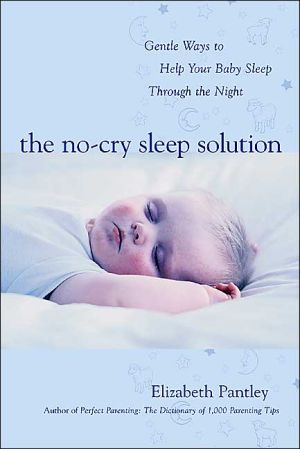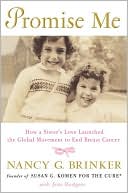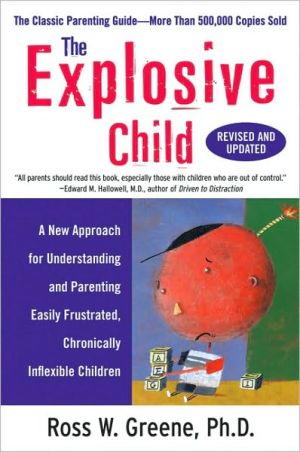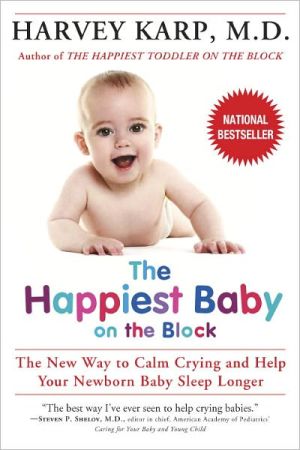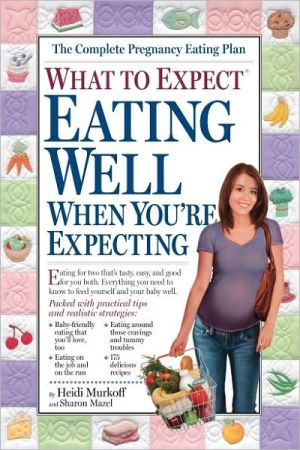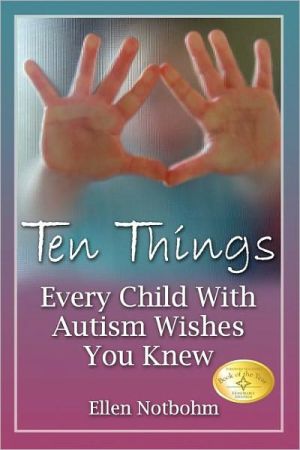The No-Cry Sleep Solution: Gentle Ways to Help Your Baby Sleep Through the Night
A breakthrough approach for a good night's sleep—with no tears\ There are two schools of thought for encouraging babies to sleep through the night: the hotly debated Ferber technique of letting the baby "cry it out," or the grin-and-bear-it solution of getting up from dusk to dawn as often as necessary. If you don't believe in letting your baby cry it out, but desperately want to sleep, there is now a third option, presented in Elizabeth Pantley's sanity-saving book The No-Cry Sleep...
Search in google:
"At long last, I've found a book that I can hand to weary parents with the confidence that they can learn to help their baby sleep through the night—without the baby crying it out."—William Sears, M.D., Author of The Baby Book"When I followed the steps in this book, it only took a few nights to see a HUGE improvement. Now every night I'm getting more sleep than I've gotten in years! The best part is, there has been NO crying!"—Becky, mother of 13-month-old MelissaA breakthrough approach that offers hope to exhausted parents looking for gentle ways to help their baby sleep without the heart-wrenching tearsAre you suffering through sleepless nights and having to fend off a barrage of heartless advice about letting your baby "cry it out"? The No-Cry Sleep Solution will show you how it is entirely possible and within your grasp to help your baby fall asleep peacefully—and stay asleep all night long.Until now the only two ways to deal with sleepless nights were to let your baby cry herself to sleep or to become a sleep-deprived martyr and tough it out from dusk until dawn. At last, there is a practical and effective third way, thanks to Elizabeth Pantley, a parent educator and mother of four. Pantley is like a best friend who's been there and is full of caring advice to help you and your baby get a good night's sleep. Her ten-step will lead you through the process one day at a time by:Shedding new light on your baby's sleep patterns and helping you set realistic goals Showing you how to analyze, assess, and improve your baby's sleep patterns using sleep logs Offering a variety of sleep solutions that fit every parenting style, whether you cosleep with your baby or she sleeps in a crib or whether you breastfeed or bottlefeed Creating a tear-free customized sleep plan that works for both you and your baby Don't let sleep deprivation keep you from enjoying your baby. The No-Cry Sleep Solution is full of reassuring advice and words of wisdom from other parents who have had success with the program. It will give you the tools you need to effectively and gently reach your goal—a good night's sleep for everyone.Elizabeth Pantley, author and parent educator, is frequently quoted in numerous magazines including Parents and Parenting. She and her husband live in Washington state with their four children—and all sleep through the night.
the no-cry sleep solution\ Gentle Ways to Help Your Baby Sleep Through the Night \ \ By Elizabeth Pantley \ McGraw-Hill\ Copyright © 2002 Better Beginnings, Inc.\ All right reserved.\ ISBN: 978-0-07-140324-5 \ \ \ Chapter One\ Do a Safety Check \ Because you haven't had quality sleep since before pregnancy or since your new baby entered your life, you may feel that nothing is more important right now than getting a full night's sleep. But there is indeed something much more important than sleep: your baby's safety. So it's critical that we start there.\ In their quest for a few more minutes of shut-eye, well-intentioned, but sleep-deprived parents make mistakes. I have heard and read about many situations in which parents put their babies in unsafe situations, all in the name of a few hours of sleep. Here are a few of those stories. I've listed only those with happy endings—but sadly, many other stories end differently.\ Parents of a newborn knew they shouldn't have their fluffy quilt in bed with the baby, but they were cold without it. One night, the mother woke to find that her baby had burrowed under the heavy quilt.\ One baby's mother was so elated when her baby fell asleep on the sofa that she left him there to nap while she went to work at her computer. A loud thump had her running to the family room where she found her baby crying on the floor.\ A mother with a baby who refused to nap admitted that when her baby fell asleep in the car seat, she left her to sleep in the garage while she went in to make dinner. She didn't want to risk waking her up by moving her to her crib.\ Parents of a baby boy received a beautiful antique crib with an ornate headboard from relatives. They'd intended to investigate the safety features of the crib but hadn't gotten around to it. One night, their screaming baby woke them. They ran quickly to his room and found him wedged between the headboard and the mattress.\ Many of the safety mistakes that parents make are because of poor decisions, while others are because of a lack of knowledge. You need to know a lot when it comes to your baby's safety. In this important chapter, you'll learn the need- to-know things about your baby's sleep-related safety.\ Safety First\ Yes, you're tired, too tired perhaps to read through the vast body of information, research, and guidelines out there on the subject of safety. Maybe you'll get to it soon, but your good intentions are not enough to keep your baby safe, and you need this information right now.\ No matter how tired you are, no matter how tempting the situation seems, please be sure that you put your baby's safety above all else.\ I've gathered safety information from a wide variety of reputable sources and authorities, including the Consumer Product Safety Commission (CPSC), the American Academy of Pediatrics (AAP), the Sudden Infant Death Syndrome Alliance, the National Institute of Child Health and Human Development, and the Foundation for the Study of Infant Deaths. And from all this, I have created sleeping-safety checklists for your review. Please read this brief section, and give it serious consideration.\ Keep in mind that these lists cover safety issues relating to sleep at home. You should, of course, be aware of many other safety issues—at home and away. Also, because safety precautions are updated constantly—and because all babies (and their families) are different—no checklist is fully complete and appropriate for every child. I ask that you please talk with your pediatrician about your particular baby. Do your homework, and please, put safety first.\ The Foremost Safety Worry: SIDS\ Sudden Infant Death Syndrome (SIDS) is one of the main safety concerns of all parents of babies. SIDS is the sudden and unexplained death of an infant younger than one year old. SIDS, sometimes known as crib death, is a major cause of death in babies from one month to one year of age. Most SIDS deaths occur when a baby is between one and four months old. The death is sudden and unpredictable; in most cases, the baby seems healthy. Death occurs quickly, usually during sleep. After thirty years of research, scientists still cannot find a definite cause or set of causes for SIDS or a way to predict or prevent it. But research has uncovered some factors that appear to reduce the risk, which I have incorporated into the safety information and lists that follow. (This information about SIDS is from the U.S. Public Health Service, American Academy of Pediatrics, SIDS Alliance, and Association of SIDS and Infant Mortality Programs, SIDS "Back to Sleep" Campaign.)\ Back to Sleep\ Many babies may sleep better and longer on their tummies. However, a number of studies have scientifically proved that babies who sleep on their tummies are more susceptible to SIDS. This is a statistical percentage meaning that not every baby who sleeps on her tummy will die of SIDS, and avoiding tummy sleeping is not a 100 percent guarantee against it. Nevertheless, it is the most important recommendation for you to know about. While a few babies actually benefit from tummy sleeping, back sleeping is safest for most. You'll need to talk with your pediatrician about your particular baby.\ Several theories support the back-to-sleep recommendation. One is that some babies who die of SIDS fall into a deep sleep and do not raise their heads to get oxygen. The other theory is that pressure on a tiny baby's chest compresses his diaphragm, preventing him from taking sufficiently full breaths. Regardless of the reason, the fact remains that, with all of the unknowns surrounding SIDS, putting your baby to sleep on her back is the single action that is proven to decrease risk.\ In all of my research, I have been unable to pin down an exact age when belly sleeping is safe. However, most researchers tend to imply that once your baby is holding her head up steadily and rolling from belly to back and back to belly quite easily on her own, you can put her to sleep on her back and then let her find her own comfortable position. In the meantime, once your doctor confirms that back sleeping is best for your baby, please put her to sleep on her back. If you have a little one who resists this sleep position, you can use the following suggestions to encourage back sleeping.\ Let your baby nap in a car seat, stroller, or infant seat. Sleeping in any of these will keep your baby slightly curled, rather than flat on a mattress; many tummy sleepers enjoy that position much better. Just be sure to follow all safety precautions, which includes keeping baby nearby. (Manufacturers of all car seats, strollers, and infant seats warn parents to never to leave a baby alone in any of these seats.) Watch to be sure your baby doesn't curl too far forward.\ If your baby is a newborn, try swaddling her for sleep. (See page 83.) Being wrapped in a blanket prevents her natural startle reflexes from waking her up.\ Wait until your baby is in deep sleep before gently turning him over. You will recognize this stage by his limp limbs and even, steady breathing.\ Talk to your doctor about the possibility of a compromise: side sleeping. Ask if a sleeping wedge or tightly rolled baby blanket can be used to hold your baby in this position.\ Although various products are available to keep a baby in the back-sleeping position, their safety has not been tested, and at this time they are not recommended. At this writing, several sleep wraps have been designed to hold a baby swaddled in a back-sleeping position and they are just becoming available. Ask your doctor or hospital about any new inventions.\ Finally, if you still choose to have your baby sleep on her tummy, or if your doctor has approved this position, make certain that the mattress is even, firm, and flat, and that every time you put her to bed, the sheets are smooth and tightly secured. Also, don't put any pillows, blankets, or toys in bed with her. If you still have concerns, ask your doctor or hospital about renting a sophisticated baby monitor so that you can keep track of sound, movement, and breathing.\ Once your baby is sleeping on her back:\ Don't let her sleep in the exact same position every night and nap. Move her head from one side to the other, and vary her position in the crib, or the placement of the crib itself, to encourage her to look in all directions. This will prevent the back of your baby's head from becoming flat (a condition called positional plagiocephaly).\ Avoid leaving your baby lying on her back in a stroller, car seat, or swing for long periods during the day.\ Place your baby on her tummy often when she is awake to encourage head and body movement and physical development of all muscle groups.\ Back Sleeping at Day Care\ According to some studies, 20 percent of SIDS deaths occur in child-care settings. Not all child-care centers have policies on infant sleep positions, and even when they do, not all child-care providers abide by the AAP's recommended guidelines. It's important for you to know that babies who are not used to sleeping on their stomachs are at a particularly high risk for SIDS if they are placed in this position for sleep. Check on the policies in your child-care center, and be sure that they are placing your baby in the proper sleep position as recommended by your doctor.\ General Sleeping Safety Precautions for All Families\ Do not allow anyone to smoke around your baby. This holds true whether your baby is asleep or awake. Babies who are exposed to smoke face an increased risk of SIDS, as well as other health complications, such as asthma.\ If your child spends time with a child-care provider, baby-sitter, grandparent, or anyone else, insist that safety guidelines are followed in that environment also.\ Keep your baby warm, but not too warm. Keep the bedroom at a comfortable sleeping temperature, usually between 65°F and 72°F (18°C to 22°C). Be careful not to overheat your baby. If your newborn comes home from the hospital wearing a hat, ask your doctor if he should wear it to sleep and for how long. A hat could contribute to overheating.\ Do not use blankets or comforters under or over the baby. They can entangle your baby or become a suffocation hazard. Instead, when the temperature warrants, dress your baby in warm sleeper pajamas layered with an undershirt.\ Dress your baby in flame-resistant and snug-fitting sleep-wear, not oversized, loose-fitting cotton or cotton-blend clothing. Billowy or cotton fabrics pose a burn hazard in case of fire or even with a close encounter with your stove or fireplace.\ Do not allow your baby to sleep on a soft sleeping surface such as a pillow, sofa, water bed, beanbag chair, pillow-top mattress, foam pad, sheepskin, feather bed, or any other soft and flexible surface. Baby should sleep only on a firm, flat mattress, with a smooth, wrinkle-free sheet that stays securely fastened around the mattress.\ Do not leave stuffed toys or pillows in bed with your baby. You may leave a small, safe "lovey" as described on pages 117–119 with a baby more than four months old who can roll over and lift and move his head easily.\ Keep night-lights, lamps, and all electrical items away from where Baby sleeps.\ Make sure you have a working smoke detector in Baby's sleeping room, and check it as often as the manufacturer suggests.\ Do not put a baby to sleep near a window, window blinds, cords, or draperies.\ If your baby is sick or feverish, call your doctor or hospital promptly.\ Keep your baby's regular appointments for well-baby checkups.\ Never shake or hit your baby. (The National Commission on Sleep Disorders Research concluded that infant abuse often occurs when a parent is sleep-deprived and at the end of his or her rope. If you feel like you may lose your temper with your baby, put her in a safe place or with another care-giver, and go take a breather.)\ Never tie a pacifier to your baby with a string, ribbon, or cord, as any of these can become wound around your baby's finger, hand, or neck.\ Follow all safety precautions when your baby is sleeping away from home, whether in a car seat, stroller, or unfamiliar place. Take extra time and care to create a safe sleeping place for your baby, no matter where you are.\ Never leave a baby unattended while in a stroller, baby seat, swing, or car seat.\ Never leave a pet with access to a sleeping baby.\ Learn how to perform infant cardiopulmonary resuscitation (CPR). Be sure that all other caregivers for your baby are also trained in infant CPR.\ Keep your baby's environment clean. Wash bedding often. Wash your hands after diapering your baby and before feeding. Wash Baby's hands and face frequently.\ Breastfeed your baby whenever possible. Breast milk decreases the risk of certain illnesses and infections, which, in turn, can decrease the risk of SIDS and other health problems.\ Pay attention to your own health and well-being. If you have feelings of anxiety, panic, confusion, sadness, regret, irritability, or hopelessness, you may be suffering from post-partum depression. Please see your doctor and explain your symptoms. This condition is common, and treatment is available.\ General Safety Precautions for Cradles and Cribs\ Make certain your baby's crib meets all federal safety regulations, voluntary industry standards, and guidelines of the CPSC's most recent recommendations (cpsc.gov). Look for a safety certification seal. Avoid using an old or used crib or cradle.\ Make sure the mattress fits tightly to the crib or cradle, without gaps on any side. (If you can fit more than two fingers between the mattress and side of the crib or cradle, the mattress does not fit properly.)\ Make certain that your crib sheets fit securely and cannot be pulled loose by your baby, which may create a dangerous tangle of fabric. Do not use plastic mattress covers or any plastic bags near the crib.\ Remove any decorative ribbons, bows, or strings. If you use bumper pads, make certain they surround the entire crib and that they are secured in many places—at a minimum, at each corner and in the middle of each side. Tie securely, and cut off dangling string ties.\ Remove bumper pads before your baby is old enough to get up on his hands and knees. If your baby can pull himself to stand, make sure the mattress is on the lowest possible setting. Also, inspect the area around the crib to make sure no dangers await him if he does climb out of the crib.\ Be certain that all screws, bolts, springs, and other hardware and attachments are tightly secured, and check them from time to time. Replace any broken or missing pieces immediately. (Contact the manufacturer for replacement parts.) Make sure your crib or cradle has a sturdy bottom and wide, stable base so that it does not wobble or tilt when your baby moves around. Check to see that all slats are in place, firm, and stable—and that they are spaced no more than 2? inches (60 millimeters) apart.\ Corner posts should not extend more than 1/16 inch (1½ millimeters) above the top of the end panel. Don't use a crib that has decorative knobs on the corner posts or headboard and footboard designs that present a hazard, such as sharp edges, points, or pieces that can be loosened or removed. Always raise the side rail and lock it into position. Make sure your baby cannot operate the drop-side latches.\ Don't hang objects over a sleeping or unattended baby—that includes mobiles and other crib toys. There is a risk of the toy falling on your baby or of your baby reaching up and pulling the toy down into the crib.\ If you are using a portable crib, make sure the locking devices are properly and securely locked.\ Make sure your baby is within hearing distance of your bed or that you have a reliable baby monitor turned on.\ Check the manufacturer's instructions on suggested size and weight limits for any cradle, bassinet, or crib. If there is no tag on the crib, call or write the manufacturer for this information.\ Any crib or cradle your baby sleeps in when away from home should meet all of the above safety requirements.\ General Safety Precautions for Co-Sleeping\ The safety of bringing a baby into an adult bed has been the subject of much debate. All four of our babies have been welcomed into our family bed. My husband, Robert, and I have naturally allowed our children to share our bed, and our children have enjoyed sleeping in a sibling bed as well. The fact that we have religiously followed known safety recommendations for sharing sleep with our babies is of the utmost importance.\ (Continues...)\ \ \ \ \ Excerpted from the no-cry sleep solution by Elizabeth Pantley Copyright © 2002 by Better Beginnings, Inc.. Excerpted by permission of McGraw-Hill. All rights reserved. No part of this excerpt may be reproduced or reprinted without permission in writing from the publisher.\ Excerpts are provided by Dial-A-Book Inc. solely for the personal use of visitors to this web site. \ \
Foreword by William Sears, M.D. Acknowledgements Introduction Part 1: Ten Steps to Helping Your Baby Sleep All Night Chapter 1: Do a Safety Check Safety First The Foremost Safety Worry: SIDS General Sleeping Safety Precautions for All Families General Sleeping Safety Precautions for Cradles and Cribs General Sleeping Safety Precautions for Co-Sleeping Chapter 2: Learning Basic Sleep Facts How Do We Sleep?How Do Babies Sleep?What is a Sleep Problem?How Much Sleep Do Babies Need?What About Nighttime Feedings?What Are Realistic Expectations?What is the Right Way to Teach a Baby to Sleep? Chapter 3: Crate Your Sleep Logs Let's Get Started! Chapter 4: Review and Choose Sleep SolutionsPart One: Solutions for Newborn Babies—Birth to Four Months Part Two: Solutions for Older Babies—Four Months to Two Years Chpater 5: Create Your Personal Sleep Plan Chapter 6: Follow Your Plan for Ten Days What If You Can't Do it All?The Road to Success is Really More Like a Dance Chapter 7: Do a Ten-Day Log Chapter 8: Analyze Your Success Evaluate Your Sleep Plan If Your Baby Is Now Sleeping Through the Night (Five or More Consecutive Hours) Chapter 9: Follow Your Plan for Ten More Days Every Baby is Different; Every Family is Different How Long is This Going to Take?"I've Tried Everything! Nothing Works! Help!" Chapter 10: Complete a Log, Analyze Your Success, and Revise Your Plan if Necessary Every Ten Days Keep This Book Handy Part II: Let's Talk About You Chapter 11: Baby's Sleeping (Finally!) but Mommy's Not What's Happening?How to Get a Good Night's Sleep? Chapter 12: Final Thoughts—Mom-to-Mom We Are Alike If You've Just Begun Living for the Moment?Basball Babies Patience, Patience, and Just a Little More Patience For More Information Index
\ From Barnes & NobleThis offering from parent educator Elizabeth Pantley is literally overflowing with ideas that will help readers get to the bottom of their little one's sleep problem and then correct it. Heartily endorsed by parenting icon Dr. William Sears, The No-Cry Sleep Solution offers a research-based ten-step plan that is gentle yet firm and can be customized to fit every parent's unique dilemma. Rejecting both the "Cry It Out" and "Live with It" strategies, Pantley has devised a solution that is compassionate and attentive to the needs of both parent and child. Tired parents, relief is in sight with this sound and effective book.\ \
